PORTFOLIO
SELIM HELSE
SELIM HELSE
As a full-fledged architect, I am captivated by the complexities of the built environment and the impact of technology and design on shaping our world. I am eager to leverage computational tools & principles to make a meaningful contribution to the field of architecture.
References available upon request.
WORK EXPERIENCE
05/2021
09/2021
Company Monogram
Location Dubai, United Arab Emirates
Role Part-Time Designer
My role in monogram included projects ranging from site architect for a villa in Dubai, and jewellery & accessories design and fabrication for Dubai Expo 2020.
EDUCATION
09/2021
01/2023
Architectural Association
London, United Kingdom
MArch - Design Research Laboratory [AADRL]
Studio Spyropoulos
Thesis - Aeolian [Awarded Distinction]
08/2014
04/2019
American University in Dubai
Dubai, United Arab Emirates
Bachelors of Architecture
Company City Space Architects
Location Dubai, United Arab Emirates
Role Architect
During my time at City Space Architects, I was tasked with designing luxury villas and retail centers, in various high-end developments throughout Dubai. Completing designs for over 15 projects, four of which are currently under construction.
Thesis - Hydrate
SKILLS
Modeling Rhinoceros, Grasshopper, Maya, Houdini FX, AutoCAD, Sketch-up
Code C#, C++, Unity, Unreal Engine
Languages
E-mail Contact
WhatsApp
salimhilles@gmail.com
+447760105034
+971501140200
English, Arabic Address
98 Grays Inn Road London, UK
11/2020 09/2021 10/2019 05/2020
Company Imkan
Location Abu Dhabi, United Arab Emirates
Role Intern Researcher at R&D Department
As a member of Imkan’s R&D department, my responsibilities included researching and exploring various company initiatives, such as place-making, integrating food into architectural design, experimenting with new materials, implementing art strategies, and investigating mixed-use typologies.
Rendering vRay, Lumion, Arnold, Photoshop, Indesign, Illustrator, Premiere, After Effect
Fabrication 3D Printing, Kuka Robot, CNC, Laser-Cutting
ACHIEVEMENTS
Graduated with distinction - AADRL 2023
2023
05/2019
08/2019
Company Middle East Architecture Network
Location Dubai, United Arab Emirates
Role Intern Architect
During my internship, I gained experience in a wide range of architectural project tasks, including developing design concepts, creating 3D models, creating drawings and diagrams, and producing visual renderings.
2022
Venice Virtual Biennial Competition - 2nd Place + Next Phase
Project Feature at Keynote Future Design Research Symposium, Towards the Certainty of Uncertainty by Dr. Theodore Spyropoulos
2018
Project Feature in COMPASSES Magazine
LinkedIn Selim Helse
ACADEMIC AEOLIAN [AADRL MArchTHESIS] ADA [AADRL WORKSHOP-2] PROFESSIONAL EXPO 2020 PAVILLION [Middle East Architecture Network] MEANDERING ARCADES [Middle East Architecture Network] COMPETITION VENICE VIRTUAL BIENNIAL FABRICATION 1 14 16 18 20 22 © All Rights Reserved
AEOLIAN
“SHAPED BY THE WIND”
MArch - AADRL THESIS PROJECT
Architectural Association, London
STUDIO MASTER
Dr. Theodore Spyropoulos
STUDIO ASSISTANTS
Octavian Mihai Gheorghiu
Hanjun Kim
Apostolos Despotidis
David Greene
PROJECT TEAM
Selim Helse
Ilya Katliarski
Pawin W.
Yun Lu
PROJECT YEAR
2022-2023
The research undertaken by the year’s studio under the guidance of Dr. Theodore Spyropoulos emphasises aspects of the elemental and how natural phenomena can be utilised as a form of technology and to devise strategies of a performative architecture as a response to global challenges in a planetary scale. Students are to research, explore, and experiment with natural phenomena to develop techniques for generating materials and architecture depending on the on-site conditions and material contingencies. The elemental approach of this research challenges what architecture can be. How materials are devised? How energy can be harnessed? And How life can be sustained?
The research addresses the process of desertification by utilising the desert’s onsite materiality and investigating its material contingency. The elemental aspect of sand is explored as form of technology, by investigating the possibilities of material transformation of sand into glass under high temperature.




MATERIAL RESEARCH
SAND WELDING



The team experimented by creating different tools for sand welding and continously developed them over time, however, the main equipements used throughout this research is a 120 Ampere battery with crocodile clips attached to the positive and negative, and two carbon electrodes, touching each other create the electrical arch which reaches necessary temperatures. Reaching a temperature approximatley 1000 degrees Celsius, enough to melt the sand into a state of liquid, fusing the sand and transforming it into glass. And therefore the range of experiments was executed with carbon electrodes further. The welding process required skills and a level of craftsmanship, therefore some training process was necessary for the execution of the experiment.

1
COLLECTIVE BEHAVIOUR
CYBERNETIC AGENT BASED SYSTEM

The proposal examines a high population of agents that can be deployed on site. Whose agency is to self organize as a swarm based system with the intentionality of performing the sand-to-glass fusion. Utilizing the idea that a bottom up approach allows the system to be much more potent to scalability at a scale of an infrastructure, as proposed in the thesis. The system is cybernetic in its ability to communicate with the changing states of the dunescape.
PATHFINDING
Non-Fusion Mode
In non-fusion mode, the agents attempt to travel using the easiest path of traveling between the sloped terrain. In this case, they move on the lower parts of the landscape, between dunes.
Fusion Mode
During fusion mode, the agents spread out and attempt to travel on the slopes of the dune in order to fuse a larger area of the slope together. Their path of travel is generated by vector-fields that flow along the back faces of the dunes.

2







3










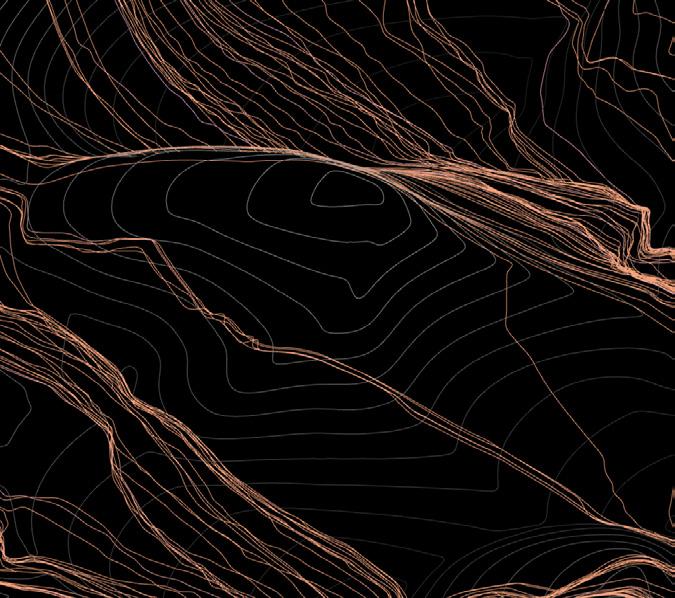

4 COHESION 10 NON-FUSION MODE COHESION 20 NON-FUSION MODE COHESION 30 NON-FUSION MODE COHESION 10 FUSION MODE COHESION 20 FUSION MODE COHESION 30 FUSION MODE SEPARATION 2 NON-FUSION MODE SEPARATION 4 NON-FUSION MODE SEPARATION 6 NON-FUSION MODE SEPARATION 2 FUSION MODE SEPARATION 4 FUSION MODE SEPARATION 6 FUSION MODE

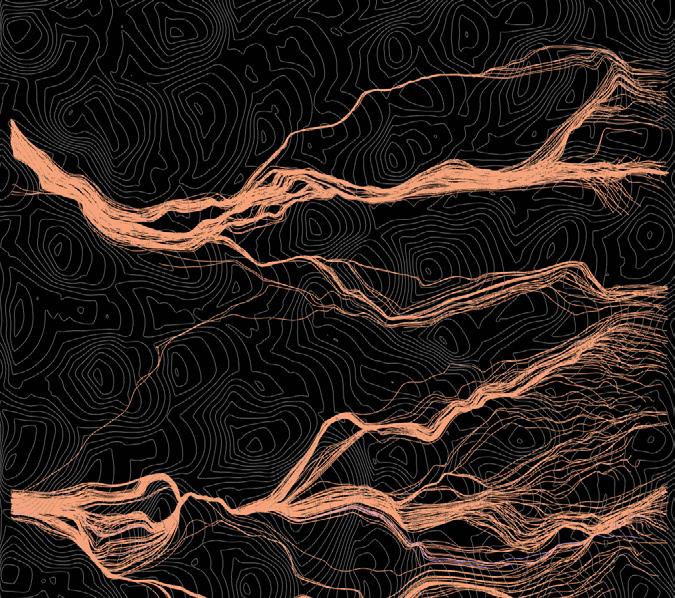

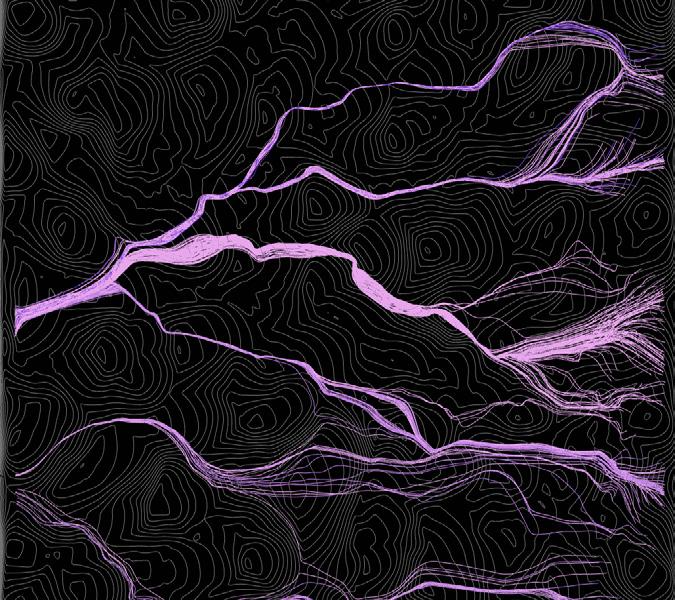

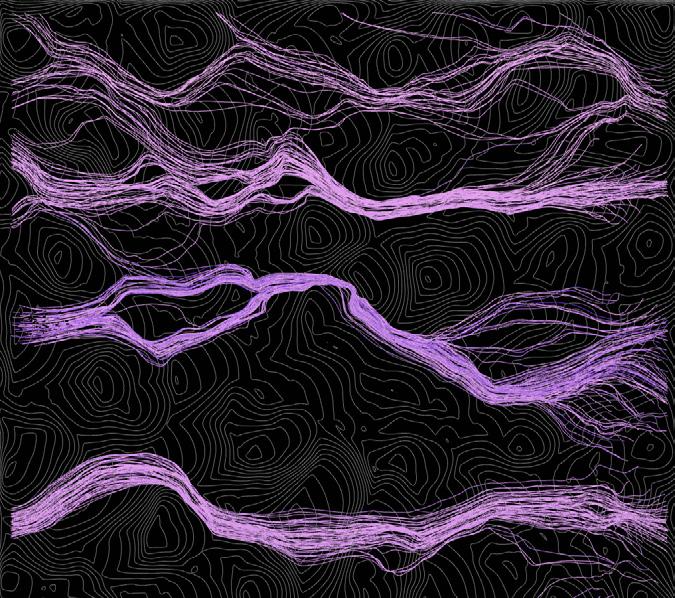

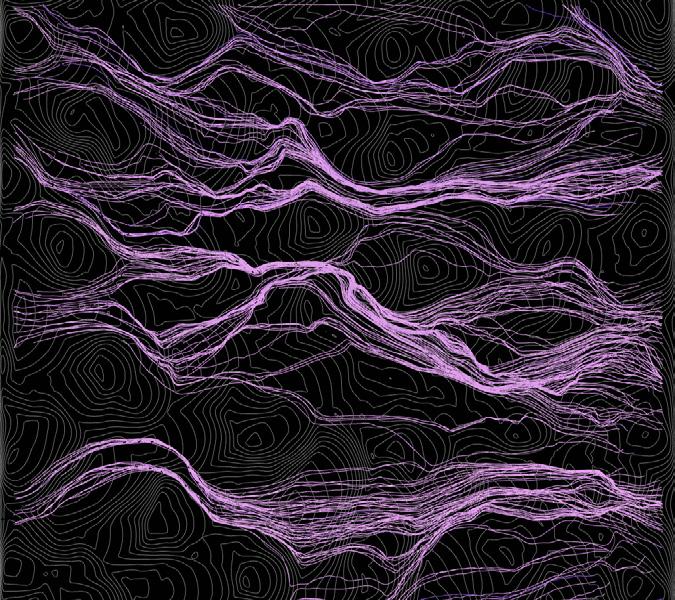




5 COHESION 10 NON-FUSION MODE COHESION 20 NON-FUSION MODE COHESION 30 NON-FUSION MODE COHESION 10 FUSION MODE COHESION 20 FUSION MODE COHESION 30 FUSION MODE SEPARATION 2 NON-FUSION MODE SEPARATION 4 NON-FUSION MODE SEPARATION 6 NON-FUSION MODE SEPARATION 2 FUSION MODE SEPARATION 4 FUSION MODE SEPARATION 6 FUSION MODE
SWARM BEHAVIOR W/ HIGH POPULATION OF AGENTS

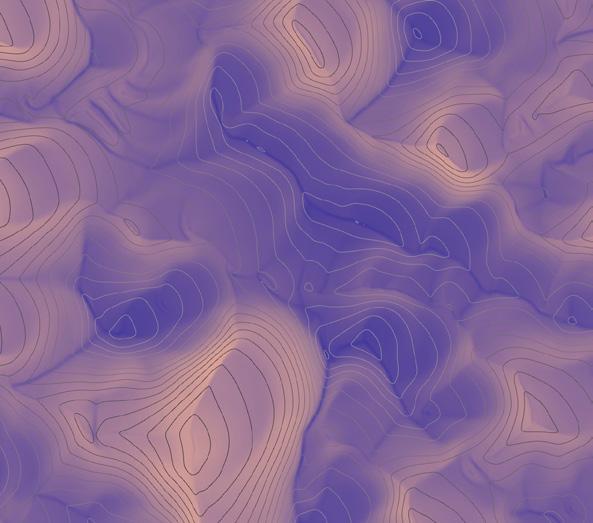














The terrain is analysed to gather key data points that will enable the agent-based system to make autonomous, real-time decisions. These values are translated into a colour map to provide a visualization of how the agents will perform in different areas. Orange areas have lower values and are characterized by stronger agent cohesion behaviour while blue areas have higher values and are characterized by stronger separation behaviour. This helps to optimize and improve the performance of the generated structure. For example, orange areas are denser than blue areas, providing a thicker, more rigid foundation to support the structure.

6
MIN
MAX INTERACTIVE BEHAVIOR
Curvature Slope Height
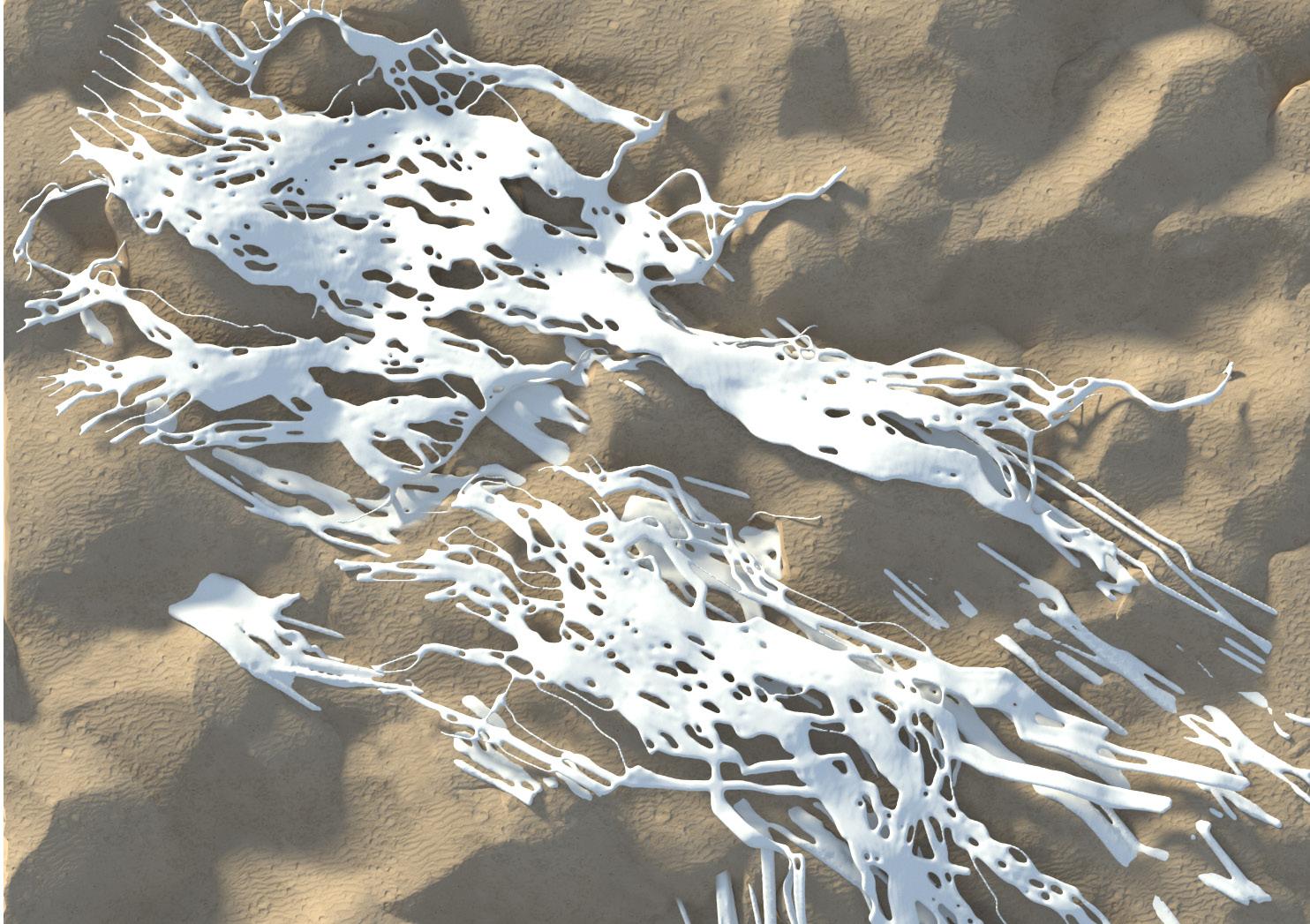
TIME ASPECT
CYBERNETIC RELATION BETWEEN AGENTS & TERRAIN





As time passes, it becomes clear how the particle behaviour begins to change. However, over time the sand will slowly begin to cover the structure, therefore, as part of its cybernetic conversation with the landscape, the agents see the newly formed terrain and begin fusing that part of it. Resulting in a multi-layered structure which is generated over a period of time.



 Layer - 1
Layers - 2
Layers - 3
Layers - 4
Layer - 1
Layers - 2
Layers - 3
Layers - 4
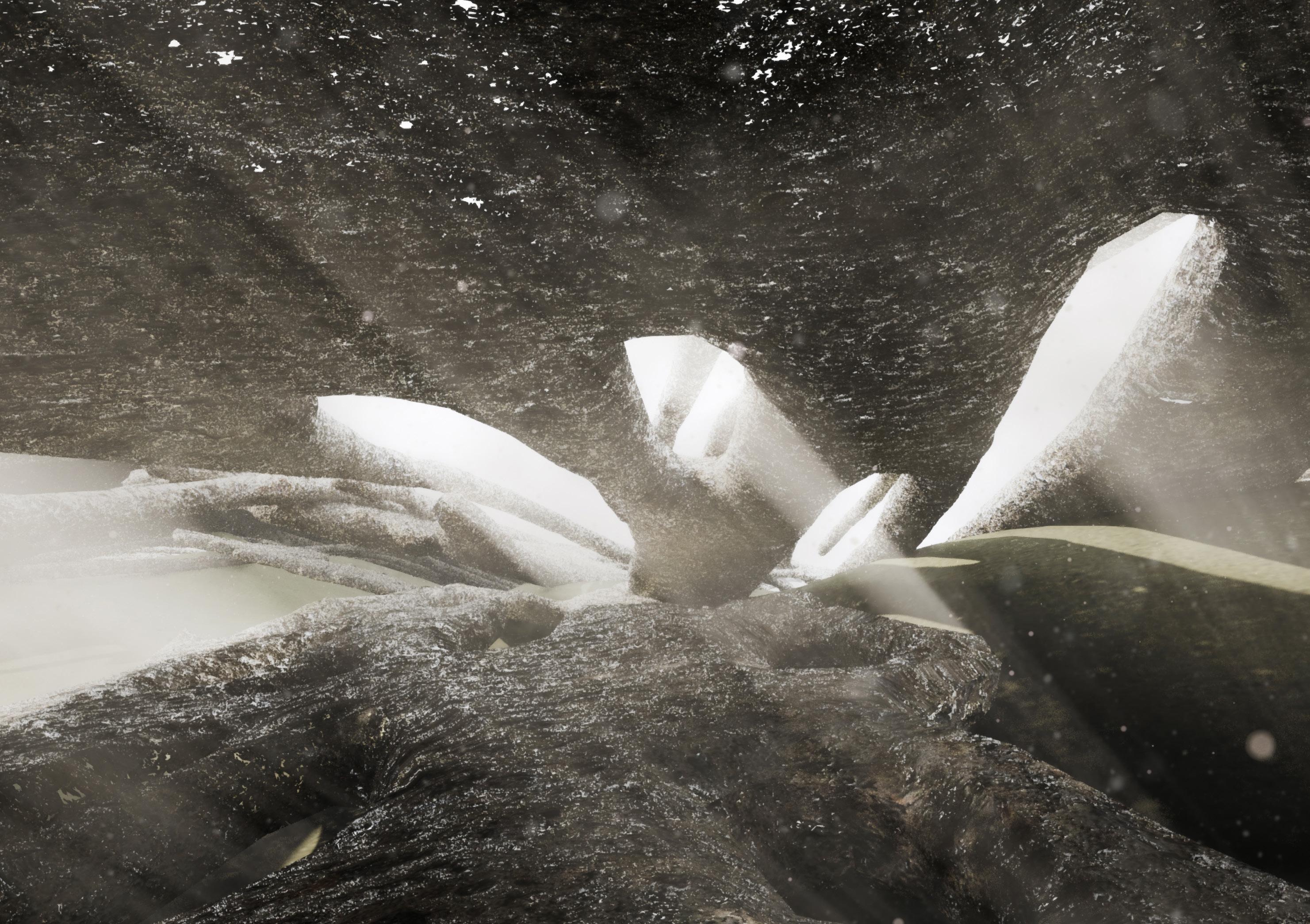
AGENT
DIGITAL PROTOTYPE







The goal of the agent is to fuse sand into glass, fabricating the structure in the desert. The agent itself employs a range of behaviours, it needs to analyse locally the landscape, communicate with other agents, move on top of sand, fuse the sand and harness energy.

10
SAND
COLLECTION BOX BATTERIES PROTECTION CORE
STATION
NOZZLE
SENSORS WELDING
WELDING



A.D.A
“2000 LINES OF CODE”



MArch - AADRL WORKSHOP
Architectural Association, London
COURSE TUTOR
Dr. Shajay Bhooshan
COURSE ASSISTANT
Cesar Fragachan
PROJECT TEAM
Selim Helse
Sahar Gohari
Zeinab Muneam
Swati Singh
Luisa Pires
Harunn Gokul
The objective of this project is to use code as a computational tool to have more control over design and to use that framework to generate a variety of specified forms. This first scope was to use particle systems to map out a distribution of points which will then be substituted with voxels, creating a box distribution network. The second scope is to design geometries that will be placed inside each voxel. These geometries must be placed and vary parametrically within the network to compliment the stability, connectivity, and the density of the global form.











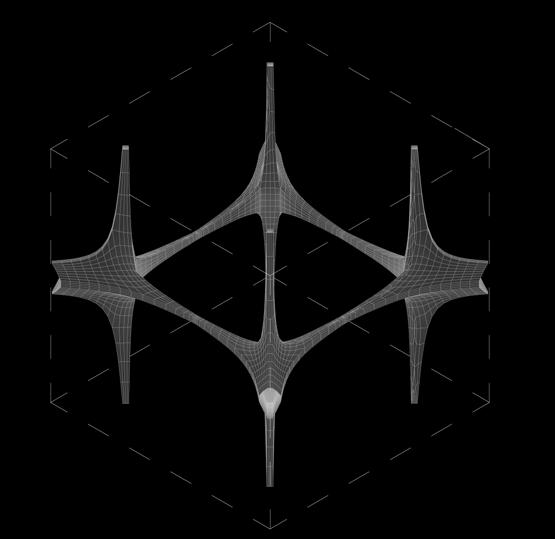
14
Component - A Component - B Component - C Component - D Component - E Component - F Attraction Repulsion Component - A Component - B Component - C Component - D Component - E Component - F

BOULEVARD EXPO PAVILION
COMPANY
Middle East Architecture Network

PROGRAM
Pavillion proposal
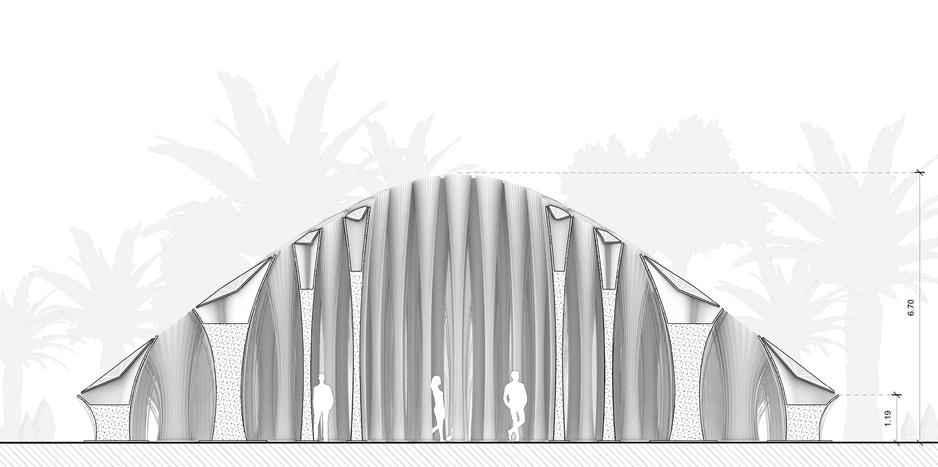
PROJECT SITE
Expo 2020, Dubai, UAE

PROJECT TEAM
Selim Helse
Wael Nasrallah
Rashid Al-Suwaidi
Ahmad Yakout
LEAD ARCHITECT
Riyad Jouka
The ‘Expo 2020 Landmark’ proposal combines technology, innovation and sustainability into an iconic structure that serves as a welcoming icon to the event. Drawing inspiration from the story of the Expo 2020 Logo and the palms of the UAE, we designed an interactive installation that symbolizes the ethos of Sustainability and Innovation.
16
Section - AA




17 Section - BB
MEANDERING ARCADES
COMPANY
Middle East Architecture Network



PROGRAM
Museum Competition

PROJECT SITE
Sharjah, United Arab Emirates

PROJECT TEAM
Selim Helse
Wael Nasrallah
Rashid Al-Suwaidi
Ahmad Yakout
Amro Mansi
LEAD ARCHITECT
Riyad Jouka
Barjeel Art Foundation Museum is an exploration in rethinking the timeless architectural typologies in the region with a contemporary mindset. Drawing on fractal tessellations, the team designed a modular building that provides spaces for meeting, dwelling and enjoying art. Taking notes from the tools of regional space-making with a contemporary design mindset; the building is a seamless integration of exterior to interior. The project utilizes triangular modules of limestone columns that are paired to compose an arcade of arches of varying heights to indicate the various functions.
18




19
CG
DG F1
GG F1 HG
C S2 A
B S2 C S2 D S2 E S2 F S2 G S2 H S1 A S1 B S1 C S1 D
F1 AG F1 BG F1
F1
EG F1 FG F1
F1 A F1 B F1 C F1 D F2
A F2 B F2 C F2
S2
VENICE VIRTUAL BIENNALE
PROGRAM
Virtual Pavillion - to display NFT’s Status



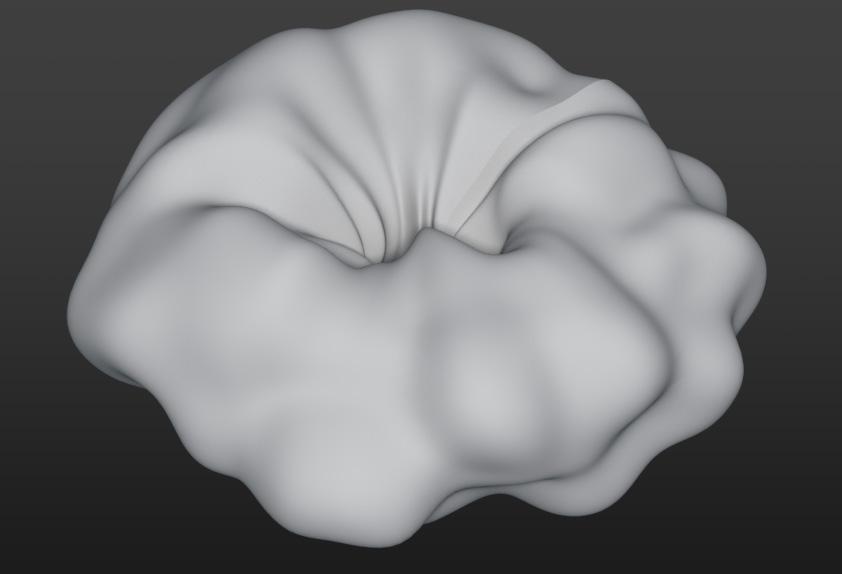

2nd
- Place + Implementation



PROJECT TEAM
Selim Helse
Cemre
Sera
Shreshtha
The design reflected a sense of dynamism and heightened the interior experience by incorporating two loops that moved according to the exhibition content. Instead of merely serving as a navigation tool, the loops were designed to be a part of the curation. Defying the conventional relationship between static content and the moving spectator, creating a dual spectacle experience with constantly changing paths of circulation and offering a unique visual experience for visitors.

20
Interactive Envelope
Rotating Platform
Floor & Art Panels
Demirci
Su Abac
Mathur



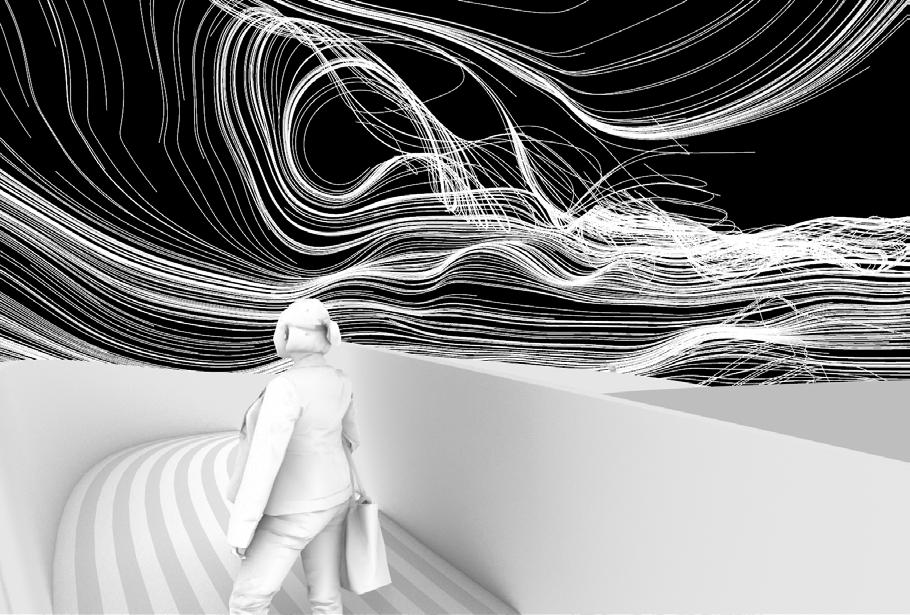
21
FABRICATION


“DIGITAL MANUFACTURING”
Digital fabrication marks a significant change in the production of products. The combination of computer-aided design software, 3D printing, and other digital fabrication methods, has made it possible to create high-quality, customizable, and scalable products quickly and efficiently. These advancements offer several advantages, such as affordability, sustainability, and increased accessibility. Therefore, studying digital fabrication was a crucial aspect of my education at AADRL as it equipped me with cutting-edge skills in architectural and construction technology.

22
3D - Scanner 3D - Printing
CNC - Machine



23
Laser-Cutting
KUKA Robot Arm
© All Rights Reserved




























































 Layer - 1
Layers - 2
Layers - 3
Layers - 4
Layer - 1
Layers - 2
Layers - 3
Layers - 4






























































